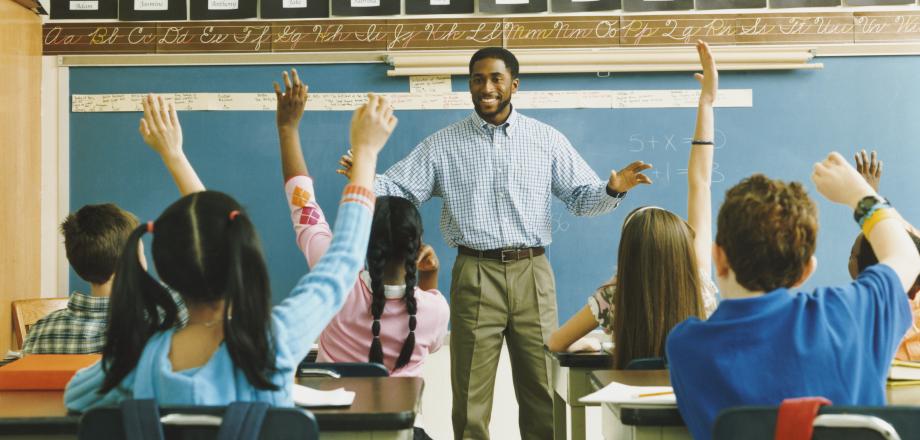July 6, 2022
| Aysha E. Schomburg, Associate Commissioner | Children’s Bureau and Ruth Ryder, Deputy Assistant Secretary | Office of Elementary and Secondary Ed
The 2021-2022 school year has come to a close. As students begin their summer break, the U.S. Departments of Education (ED) and Health and Human Services (HHS) come together to highlight the significant work that American educators and child welfare professionals have done to support students in foster care; to provide information about resources available for schools to support students in foster care; and to provide information about federal collaboration and efforts in this space.
First, we want to thank the American educator —and child welfare agency workforce who support students in foster care every day. We are thankful for the tireless work of professionals—including teachers, social workers, and counselors—who strive to ensure that a student’s engagement with the child welfare system does not have an adverse impact on that student’s academic experiences and opportunities to succeed. We are especially grateful that educators and child welfare staff have collaborated so effectively in neighborhood schools, as well as at the district and state levels. Partnership and shared goals are crucial to ensuring that students in foster care have unfettered access to the supports they need. Both child welfare professionals and educators have a responsibility to encourage all students in foster care to reach their academic goals by providing access to resources that help support the social and emotional well-being of children in foster care.
The COVID-19 pandemic has been a life altering event for students, families, educators, school support staff and the child welfare workforce. More than 140,000 children’s lives were permanently changed by the loss of a mother, father, or grandparent caregiver, and children of racial and ethnic minorities accounted for 65% of those who lost a primary caregiver due to the pandemic.[1] Even before the COVID-19 pandemic, students in foster care faced unique barriers to succeeding in school and graduating from high school. Moreover, the pandemic has had a disproportionate effect[2] on low-income and traditionally underserved student populations, especially students in foster care and children of color. Therefore, we want to acknowledge the role that educators and child welfare professionals have long played in supporting the mental health of students of all ages and families before and during the pandemic. We further emphasize how important it is to ensure that the professionals who support students and families also have access to the services needed to foster their own emotional wellness. We will continue to share and uplift best practices and resources[3] aimed at supporting the wellness and mental health needs of students, their families, and the child welfare and education professionals who support them.
Though the pandemic added stress to the lives of students in foster care and the adults who support them, it also resulted in an influx of resources being available to help these students. State educational agencies and school districts can use Elementary and Secondary School Emergency Relief (ESSER) Funds, including the ESSER funds allocated under the American Rescue Plan Act of 2021 Visit disclaimer page, to provide an array of supports to students in foster care to help them navigate the impacts of the COVID-19 pandemic. In addition, the Full-Service Community Schools[4] program improves the coordination, integration, accessibility, and effectiveness of services for children and families through parent leadership, family literacy, mentoring, youth development programs, and activities that can improve access to and use of social service programs, programs that promote family financial stability, and mental health services. Further, President Biden’s proposed budget for the U.S. Department of Education for Fiscal Year 2023 Visit disclaimer page includes $30 million designated for a new program designed to improve the educational outcomes for students in foster care. ED believes this program will enable educational agencies to establish partnerships with child welfare agencies to better address the unique needs of students in foster care. Finally, additional funding for the Chafee Foster Care Program for Successful Transition to Adulthood[5], provided through Division X of the Consolidated Appropriations Act, 2021, also remains available through expenditure through September 30, 2022.
In conclusion, ED and HHS are committed to extending our collaboration in tangible ways at the federal level. Our agencies intend to co-host a webinar this fall — co-designed with young adults who experienced foster care — to share best practices on how state and community partners are designing academic programming for students in foster care. Through this webinar, we hope to promote understanding of the experiences of students in foster care; underscore the importance of interagency collaboration at the federal, state, and local levels to support this student population; and demonstrate effective partnerships between child welfare and educational agencies.
To learn more about our agencies’ shared commitment to ensure that students in foster care are able to meet their full academic potential, please visit our webpages at https://oese.ed.gov/offices/office-of-formula-grants/school-support-and-accountability/students-foster-care/ Visit disclaimer page (ED) and https://www.childwelfare.gov/topics/systemwide/service-array/education-services/educational-stability/ (HHS).
[1] S Hillis, et al. Covid-19-Associated Orphanhood and Caregiver Death in the United States. Pediatrics. DOI: 10.1542/peds.2021-053760.
[2] Education in a Pandemic: The Disparate Impacts of COVID-19 on America’s Students https://www2.ed.gov/about/offices/list/ocr/docs/20210608-impacts-of-covid19.pdf Visit disclaimer page (PDF).
[3] Children’s Bureau (2022) Tip Sheet on Responding to Youth and Young Adult Mental Health Needs. Division X. Technical Assistance.
[4] Office of Elementary and Secondary Education, Full Service Community Schools Programs. https://oese.ed.gov/offices/office-of-discretionary-grants-support-services/school-choice-improvement-programs/full-service-community-schools-program-fscs/ Visit disclaimer page.
[5] ACYF-CB-PI-21-04. Guidance and instruction related to the Supporting Foster Youth and Families through the Pandemic Act, Division X of the Consolidated Appropriations Act, 2021, Public Law (P.L.) 116-260, enacted December 27, 2020.

